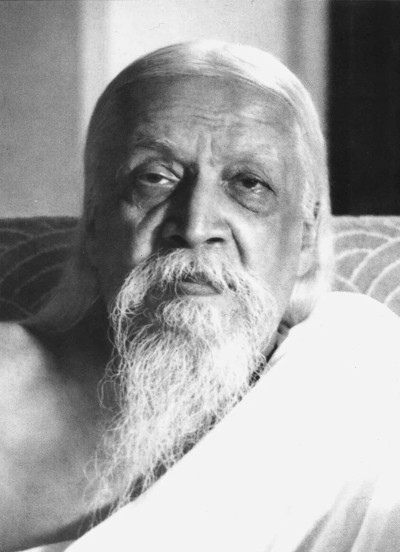श्री Yogesh Ashok Powar
Personal Blogs
Sri Aurobindo
Sri Aurobindo
Tags: Sri AurobindoWe were fortunate to attend and complete the Yoga Instructor’s Course from S-Vyasa, a deemed university. It was an offline course that lasted from February 2024 to August 2024. More than 50 lectures were conducted, and in Pune, it was managed by Chiranjiv Foundation. My wife and I both enrolled in the weekend batches; classes were held from 7:30 to 9:30 AM near Tilak Road on Saturdays and Sundays.
The syllabus was equally divided between theory and practicals. The theory covered four major streams of yoga (Karma, Bhakti, Jnan, and Rajyoga) with references from the Gita. It also introduced the Vedas, Upanishads, and Indian culture and history. The practical sessions included Surya Namaskars, various asanas, kriyas, pranayama, and cyclic meditation.
I strongly recommend this course to anyone interested in Indology and keen to explore life the Indian way in a serious manner, as it includes assignments, practical and theory exams, and reports.
My report was on the topic “Introduction to Integral Yoga of Sri Aurobindo.”
Please download the report in
PDF or
ODP format from
here. Its also called as Yoga of Perfection.
“As always, the more we study, the more we realize how much we don’t know. And in that realization, we stay grounded.”
It is the 15th of August today, and it is Sri Aurobindo’s birthday.
There are a couple of videos that are true masterpieces—works of art that I would strongly recommend for exploring his life.
- Sri Aurobindo: A New Dawn: An Inspirational Hand Painted Animation Film. (28 Mins)
- Sri Aurobindo & the Earth’s Future - Part I : From Darkness to Light. (2.24 hrs)
- Sri Aurobindo: A Call to New India (14 mins)
I am sharing a small essay on him, which I compiled from the The book, The Synthesis of Yoga, by Sri Aurobindo and his Wiki page and . It is compiled with the intention of introducing Sri Aurobindo and his contribution to the Indian Independence movement for a 3-5 minute speech.
Sri Aurobindo
An Introduction
Early Life in London
Sri Aurobindo was born in Kolkata on 15th August 1872. Krishna Dhun Ghose, his father, wanted his sons to enter the Indian Civil Service (ICS), an elite organization comprising around 1,000 people. To achieve this, it was necessary for them to study in England, so the entire family moved there in 1879. He studied at St. Paul’s School in London and at King’s College, Cambridge.
He learned Greek and spent his years reading literature and English poetry while also acquiring some familiarity with German and Italian.
He passed the written ICS examination after a few months, ranking 11th out of 250 competitors. Aurobindo had no interest in the ICS and purposefully arrived late to the horse-riding practical exam to disqualify himself from the service.
Baroda
Returning to India in 1893, he worked for the next 13 years in the princely state of Baroda, serving the Maharaja as a professor at the state college.
During his stay in Baroda, he contributed many articles to Indu Prakash and served as the chairman of the Baroda College Board. He began taking an active interest in the Indian independence movement against British colonial rule, although his position in the Baroda state administration prevented him from engaging in overt political activities. Despite this, he worked behind the scenes and connected with resistance groups in Bengal and Madhya Pradesh while traveling to these states. Aurobindo also established contact with Lokmanya Tilak and Sister Nivedita.
At Baroda, Aurobindo self-studied Sanskrit and Bengali.
Calcutta
In 1906, Aurobindo resigned from his post in Baroda and moved to Calcutta, where he became one of the leaders of the Indian nationalist movement. As editor of the newspaper Bande Mataram, he advocated for complete independence from Britain. He was arrested in May 1908 in connection with the Alipore Bomb Case and was subsequently released after a year of isolated imprisonment.
Pondicherry
Upon his release, he started two new publications: Karmayogin in English and Dharma in Bengali. He also delivered the Uttarpara Speech, hinting at a shift in his focus to spiritual matters. Repression from the British colonial government continued due to his writings in these new journals, and in April 1910, Aurobindo moved to Pondicherry, where the British colonial secret police monitored his activities.
Sri Aurobindo was nominated twice for the Nobel Prize—once in 1943 for Literature and again in 1950 for Peace—but did not receive the award.
His well-known publications include:
a) The Life Divine
b) The Synthesis of Yoga
c) Essays on the Gita
d) Savitri
Sri Aurobindo passed away on 5th December 1950.
Sri Aurobindo’s life and works continue to inspire generations, reminding us of the profound connect between spirituality and pursuit of freedom, both personal and collective.
“Inner transformation in shaping a world’s destiny.”
Tags: Sri Aurobindo
Updated on: 2024-08-15
